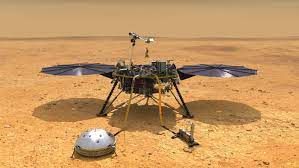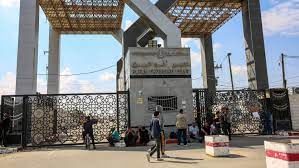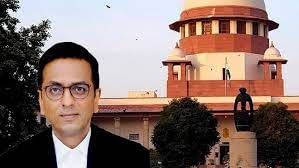UPSC Daily Current Affairs- 19th October 2023 | Current Affairs & Hindu Analysis: Daily, Weekly & Monthly PDF Download
GS-I
Kati Bihu
Subject: Art and Culture

Why in News?
Recently, the Prime Minister of India extended best wishes on the auspicious occasion of Kati Bihu to the people of Assam.
About Kati Bihu:
- It is celebrated in the state of Assam.
- Kati means to cut and this day marks the time of relocation of rice saplings.
- It is also known as Kongali Bihu. (Kongali means poor)
- There are another two Bihu festivals celebrated in Assam - Bhogali or Magh Bihu is observed in January and Rongali or Bohag Bihu is observed in the month of April.
- Significance
- During this month, there are not so many things to eat.
- They celebrate this festival by lighting the earthen lamps or candles and lit their house with lighting.
- Lighting diya near Tulsi plant is one of the main part of the festival. They worship Tulsi plant on this auspicious day.
- People also light a special lamp called "Akash Banti" (Sky candle) in their paddy fields.
- These lamps are fueled by mustard oil and are kept high on the tip of bamboo poles.
- People believe that these lighted lamps will guide their ancestors towards heaven.
Source: PIB
What Caused the Largest Marsquake?
Subject: Geography

Why in News?
Just like on Earth, the surface of Mars sometimes vigorously shakes and unsurprisingly, that is called a marsquake. The largest ever marsquake recorded in history happened in 2022 and scientists now finally know the reason behind it.
Background:
- On May 4, 2022, NASA's InSight lander detected the largest quake yet recorded on Mars, one with a 4.7 magnitude. It is fairly modest by Earth’s standards but strong for Mars.
- Unlike Earth, Mars doesn't have the same geological process called plate tectonics which usually causes earthquakes.
- Initially, scientists thought that a meteorite impact might be the culprit behind this unusual "marsquake."
- However, their search for an impact crater did not lead to any findings. This led scientists to a new conclusion – this particular quake was actually triggered by tectonic activity happening within Mars itself.
- It is like rumbling deep inside the planet, giving researchers a better understanding of what makes Mars tremble and move.
- This discovery sheds new light on the seismic activities of Mars.
Significance of This Finding:
- Scientists concluded that the largest marsquake seen by InSight was tectonic, not an impact. This is important as it shows the faults on Mars can host hefty marsquakes.
- The energy released during this particular marsquake was more powerful than all the other marsquakes InSight had recorded combined.
- Unlike Earth, where the outer layer, called the crust, is divided into big plates that move around and cause earthquakes, Mars has a single, unbroken crust.
- The findings reveal that there are still faults that are active on Mars.
- The planet is still slowly shrinking and cooling, and there is still motion within the crust even though there are no active plate tectonic processes going on anymore. These faults can trigger quakes.
- Considering the upcoming human missions to Mars, a greater understanding of Martian seismic activity is pertinent.
- With information from studies like this one, we might understand where it would be safe for humans to land on Mars and where it would be better to avoid a launch.
Tectonic Plates & How They Cause Earthquakes:
- A tectonic plate (also called lithospheric plate) is a massive, irregularly shaped slab of solid rock, generally composed of both continental and oceanic lithosphere.
- Plate size can vary greatly, from a few hundred to thousands of kilometres across; the Pacific and Antarctic Plates are among the largest.
- Plate thickness also varies greatly, ranging from less than 15 km for young oceanic lithosphere to about 200 km or more for ancient continental lithosphere (for example, the interior parts of North and South America).
- How do these massive slabs of solid rock float despite their tremendous weight?
- The answer lies in the composition of the rocks.
- Continental crust is composed of granitic rocks which are made up of relatively lightweight minerals such as quartz and feldspar.
- By contrast, oceanic crust is composed of basaltic rocks, which are much denser and heavier.
- Because continental rocks are much lighter, the crust under the continents is much thicker (as much as 100 km) whereas the crust under the oceans is generally only about 5 km thick.
- Like icebergs, only the tips of which are visible above water, continents have deep "roots" to support their elevations.
- Most of the boundaries between individual plates cannot be seen, because they are hidden beneath the oceans.
- Yet oceanic plate boundaries can be mapped accurately from outer space by measurements from GEOSAT satellites.
- Earthquake and volcanic activity is concentrated near these boundaries.
When Did Tectonic Plates Develop on Earth?
- Tectonic plates probably developed very early in the Earth's 4.6-billion-year history, and they have been drifting about on the surface ever since-like slow-moving bumper cars repeatedly clustering together and then separating.
- Like many features on the Earth's surface, plates change over time.
- Those composed partly or entirely of oceanic lithosphere can sink under another plate, usually a lighter, mostly continental plate, and eventually disappear completely.
- This process is happening now off the coast of Oregon and Washington in North America.
- The small Juan de Fuca Plate, a remnant of the formerly much larger oceanic Farallon Plate, will someday be entirely consumed as it continues to sink beneath the North American Plate.
Source: Indian Express
GS-II
Impact of a SC Order on Telcos’ Licence Fee Tax
Subject: Polity

Why in News?
The Supreme Court of India has held that payment of entry fee as well as variable annual licence fee made by telcos will be considered capital expenditure and not revenue expenditure and taxed accordingly.
- In a blow to telecom companies in the country, the decision could bring in additional tax liabilities (~$1 billion in the current fiscal year) for them - especially for older telcos Bharti Airtel and Vodafone Idea.
What did the Supreme Court Rule?
- Disposing an appeal by the Income Tax Department, a Division Bench of the SC held that -
- The payment of entry fee as well as the variable annual licence fee paid by the respondents-assesses to the DoT (Department of Telecommunication) under the (New Telecom) Policy of 1999 are capital in nature, and
- May be amortised in accordance with Section 35ABB of the (Income Tax) Act.
- This essentially means that instead of deducting the entire expenditure all at once, the company will need to deduct a portion of the total fee over each year for tax purposes.
- As part of its judgement, the top court also set aside a Delhi HC order that categorised licence fees before and after July 31, 1999, differently, as capital expense and revenue expense, respectively.
- As per the National Telecom Policy 1999, telecom operators had to pay a one-time licence fee to start operations, along with a yearly licence fee based on their annual turnover.
- This was in contrast to the earlier policy, wherein they had to pay licence fee in one go.
- The SC noted that the migration to the 1999 telecom policy (from 1994 policy) and variable nature of payments, does not change the licence fee’s essence.
How will the Order Impact Telcos?
- Currently, telecom companies treat licence fees as an expense, claiming deductions on account of variable licence fees on a year-to-date basis for computing their tax liability.
- After the judgement, the licence fee would have to be treated as a capital expense, with a provision for amortisation of the licence fee over the licence period.
- Prima facie, the accounting change would lead to higher EBITDA/PBT and lower cashflow on higher tax outgo initially, but would likely even out over the licence holding period.
- EBITDA is an acronym for Earnings Before Interest, Taxes, Depreciation, and Amortisation. PBT stands for Profit Before Tax.
- They usually show how the net profit of the company stands reduced due to the impact of Interest, Depreciation, and Tax.
Concerns Regarding the SC Order:
- The various telecom operators who have incurred substantial expenses to obtain a licence will have to revisit the position taken with respect to the deductibility of the expense.
- The disallowance of the expenses would adversely impact the companies which are already suffering a huge loss.
- The SC’s order has not clarified whether the changes to the accounting structure will have to be made on a retrospective basis.
- According to the Kotak report, the income tax authorities are expected to raise demand for the shortfall in tax payment for the prior period, along with applicable penalties.
- Telecom companies are likely to file a review petition and the actual tax liability could get delayed.
Source: Economic Times
Rafah Crossing
Subject: International Relations
Why in News?
Palestinians have been gathering at the Rafah border crossing with Egypt in the southern Gaza Strip.
- Meanwhile, Egypt has opened the borders for UN humanitarian aid for Palestinians.
What is Rafah Crossing?
- The Rafah Crossing is a border crossing point between the Gaza Strip and Egypt, located in the southern Gaza Strip.
- It serves as one of the few access points for people and goods to enter or exit the Gaza Strip, which is a Palestinian territory along the eastern coast of the Mediterranean Sea.
- Egypt has maintained strict movement restrictions at the Rafah crossing for years, raising concerns that it indirectly supports Israel’s Gaza blockade, which began in 2007 after Hamas took control.
Egypt’s Role and Restrictions
- Security Concerns: Security concerns in North Sinai, where Egypt has battled jihadists linked to Al Qaeda, have largely justified these restrictions.
- Avoiding Exodus: Egypt may be reluctant to open the crossing without clear conditions and guarantees to avoid a mass exodus of Palestinians from Gaza.
- Responsibility Concerns: Egypt is concerned about being responsible for a large influx of Gazans if the crossing is opened indefinitely.
- Permanent Resettlement: Egypt is reluctant to facilitate a permanent resettlement of hundreds of thousands of Palestinians from Gaza.
Source: The Hindu
In India, reproductive autonomy remains a pipedream
Subject: Polity

Why in News?
A recent Supreme Court case in India has spotlighted reproductive autonomy. It centers on a 27-year-old mother of two, grappling with an unwanted pregnancy due to lactational amenorrhea, igniting a debate on India’s abortion rights, known for their relative liberalism.
Background
- India’s population policy promotes a two-child norm, making it seemingly unremarkable for a woman to seek an abortion to avoid becoming a mother for the third time.
- However, this case is far from straightforward due to the pregnancy being at 26 weeks, exceeding the gestational limit prescribed in the 2021 Medical Termination of Pregnancy (MTP) Act.
- In such cases, medical practitioners’ opinions hold paramount importance.
Reproductive Autonomy vs. Ethical Concerns
- Interchangeable Terminology: The heart of the matter lies in the interchangeable use of terms like foetus, child, and baby, particularly given the advanced stage of pregnancy. This linguistic flexibility can significantly impact the ethical considerations of the case.
- Concerns of Foeticide: As the pregnancy had reached 26 weeks, concerns emerged regarding the termination possibly constituting “foeticide.” The advanced stage of pregnancy blurs the line between a developing foetus and a potentially viable child, leading to ethical dilemmas.
- Justice Nagarathna’s Emphasis: Justice Nagarathna emphasized the paramount importance of prioritizing the petitioner’s decision and upholding her reproductive autonomy. Her stance echoes Justice D Y Chandrachud’s earlier observation regarding the intrinsic right of pregnant women to choose abortion without the need for consent or authorization from a third party.
- Balancing Reproductive Autonomy and Ethics: The case highlights the intricate balance required between recognizing and safeguarding the fundamental rights of pregnant women to make choices about their bodies and reproductive health, while simultaneously addressing the ethical dimensions of such decisions within the framework of societal values and laws.
The legal framework and amendments pertaining to abortion in India
- MTP Act of 1971: The Medical Termination of Pregnancy (MTP) Act of 1971 was the foundational legislation that regulated abortion in India. It permitted abortions up to 20 weeks of gestation under specific conditions, such as the risk to the life or physical or mental health of the pregnant woman.
- Amendment in 2021: In 2021, the MTP Act underwent significant amendments to modernize and liberalize India’s abortion laws. The key changes included:
- Extending the permissible gestational limit from 20 to 24 weeks.
- Expanding access to abortion services by allowing a broader range of healthcare providers to perform abortions, including mid-level providers.
- Constitution of Medical Boards: The 2021 amendment introduced provisions for the constitution of Medical Boards. These boards consist of medical experts responsible for assessing cases where pregnancy termination is sought beyond 24 weeks.
- Reducing Dependency on Courts: By allowing Medical Boards to make determinations, the amendment sought to reduce the burden on the judicial system and expedite the decision-making process for cases involving late-term pregnancies.
Way forward
- Citizen with Agency: The petitioner approached the court as an empowered citizen, asserting her right to make choices about her own body.
- Socially Accepted Context: Her pregnancy occurred within societal norms, emphasizing that reproductive autonomy applies broadly.
- Sound Mental Health: Her rational decision challenges stereotypes about individuals seeking abortions.
- Absence of Foetal Anomalies: Her request is driven by personal choice, not medical necessity.
- Reproductive Choice: She firmly expressed her desire not to have another child, highlighting the importance of individual reproductive decisions.
- Seeking State Support: By seeking state support for safe abortion services, she aligns with international commitments on access to reproductive healthcare as a human right.
Conclusion
- This case underscores the battle between reproductive autonomy and ethical considerations surrounding abortion in India. As women navigate the complex journey to assert their reproductive rights, questions arise about whether they can truly claim ownership of their bodies on their own terms.
Source: The Hindu
GS-III
Exclusome
Subject: Science and Technology

Why in News?
Recently, Cell biologists identified a new organelle called exclusome.
Background:-
- Researchers at ETH Zurich recently identified a previously unknown compartment in mammalian cells. They have named it the exclusome.
About Exclusome:-
- It is present in mammalian cells made of rings of DNA.
- It is made up of DNA rings known as plasmids.
- It lies in the cell plasma.
- It is exceptional because eukaryotic cells (cells with nuclei) usually keep most of their DNA in the cell nucleus, where it is organized into chromosomes.
- The exclusome primarily comprises plasmids, which are circular DNA molecules.
- These can replicate independently of chromosomes.
- They are usually found in bacteria and other microscopic organisms.
- Some of these plasmids are derived from external sources, while others are called telomeric rings as they originate from the telomeres or capped ends of chromosomes.
- These plasmids lack the genetic instructions required for protein synthesis.
- This sets them apart from chromosomal DNA.
Source: The Hindu
Centre raises MSP for Rabi Crops
Subject: Economy

Why in News?
The Cabinet Committee on Economic Affairs (CCEA) has increased the Minimum Support Prices (MSP) for all Rabi crops for the financial year 2024-25.
Understanding MSP
- Policy Framework: MSP is a government policy designed to safeguard farmers’ income. Unlike subsidized grains in the Public Distribution System (PDS), it isn’t an entitlement but a part of administrative decision-making.
- MSP Commodities: The Centre currently fixes MSPs for 23 agricultural commodities, guided by recommendations from the Commission for Agricultural Costs and Prices (CACP).
- No Legal Backing: There is currently NO statutory backing for these prices, nor any law mandating their enforcement.
Fixing MSPs
- Factors Considered: CACP considers multiple factors when recommending MSP for a commodity, notably the cost of cultivation.
- Key Determinants: These determinants encompass supply and demand dynamics, domestic and global market prices, parity with other crops, implications for consumers and the environment, and terms of trade between agriculture and non-agriculture sectors.
- 5 Times Formula: The 2018-19 Budget introduced a “pre-determined principle” where MSPs should be set at 1.5 times the production cost, simplifying CACP’s role to estimating production costs and applying the formula.
Production Cost Calculation
- Three Cost Categories: CACP calculates three production cost categories for each crop, at both state and all-India average levels.
- A2: Encompasses all paid-out costs directly incurred by the farmer, such as seeds, fertilizers, labor, land lease, fuel, and irrigation.
- A2+FL: Includes A2 and imputes a value for unpaid family labor.
- C2: A comprehensive cost accounting for rentals and forgone interest on owned land and capital assets in addition to A2+FL.
Back2Basics:
| Rabi Crops | Kharif Crops | Zaid Crops | |
| Growing Season | Winter (sown in Oct-Dec) | Monsoon (sown in Jun-Jul) | Summer (sown in Feb-Apr) |
| Harvest Season | Spring (harvested in Mar-Apr) | Autumn (harvested in Oct-Nov) | Early Autumn (harvested in May-Jun) |
| Examples | Wheat, barley, peas, gram | Rice, maize, cotton, soybean | Cucumber, watermelon, muskmelon |
| Water Requirement | Relies mainly on rainfall | Relies on monsoon rains | Requires irrigation and supplemental water |
| Temperature | Grows in cooler temperatures | Grows in warmer temperatures | Grows in hot temperatures |
| Crop Rotation | Often used in crop rotation | Less commonly used in crop rotation | Usually not part of crop rotation |
Source: The Hindu
|
38 videos|5293 docs|1118 tests
|





















